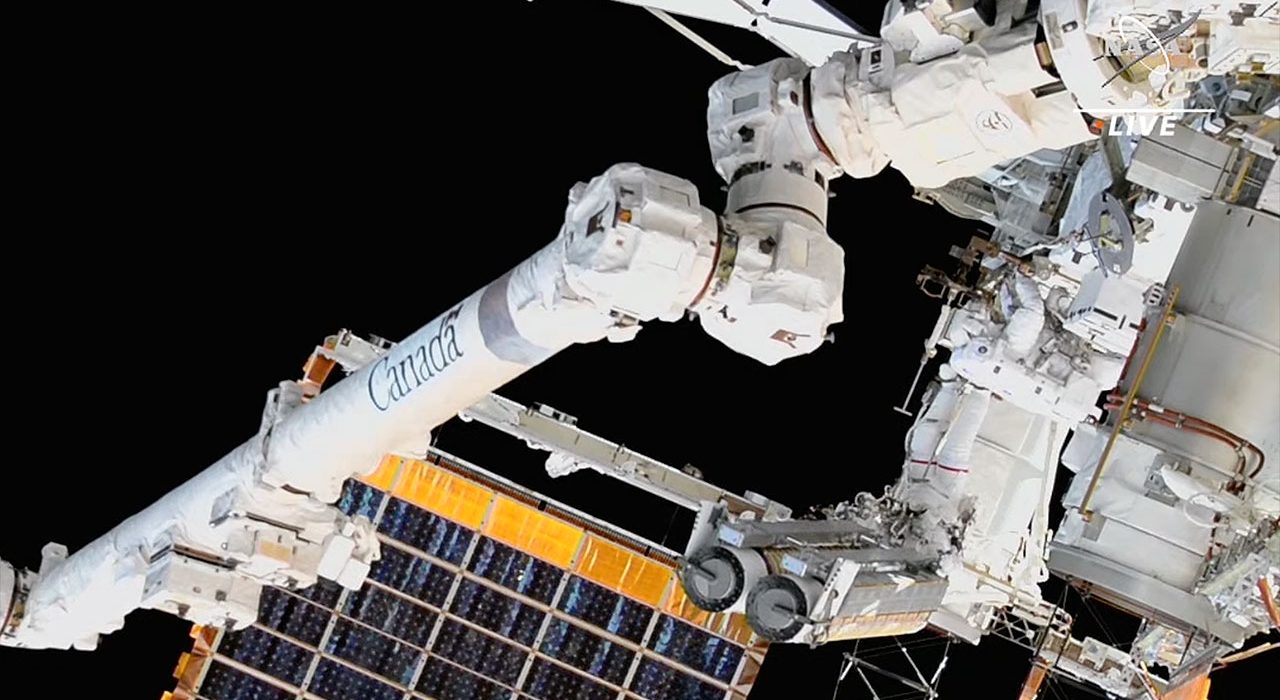Canadarm3 will fly to NASA's upcoming Gateway space station in about five years, thanks to a lucrative new design contract secured from earlier funding for the program, Canadian space officials promised.
The robotic arm, key to building the Space station entrance that will play a key role in POTThe series of crew members Artemis program lunar missions, was awarded a $730 million ($999.8 million Canadian) design and test contract on Thursday (June 27) from the Canadian Space Agency (CSA). This will allow Canadarm3 to be launched no earlier than 2029.
“We are entering an exciting period as Canadarm3 will take shape and come to life on our manufacturing floor,” Mike Greenley, CEO of robotic arm maker MDA Space, said in a Canadian government statement. about the ad“Canada's participation in the Artemis program strengthens and expands our national and industrial leadership as a new space era dawns.”
“Canadian robotics has played a pivotal and revolutionary role in the assembly and maintenance of space systems and in scientific research for decades. Our expertise is highly valued and sought after internationally,” said CSA President Lisa Campbell in the same statement.
The CSA is sending the first Canadian around the Moon, Jeremy Hansennot before 2025 as part of the NASA-led project. Artemis 2 mission. This is due to the agency's contribution to Canadarm3 and the like. moon efforts, announced for the first time In 2019More CSA Gateway missions will follow, and a possible Canadian moon landing in the future.
Related: Canadian Artemis 2 astronaut got his seat on the lunar mission with 'potato salad'
Canadarm3 is the next generation successor to the successful series of robots active in space for over 40 years, including Canadarm for the space shuttle and principles International Space Station (ISS) and Canadarm2 which performs maintenance work and spacewalks on the ISS. MDA Space is the current manager of the Canadarm programs along with Dextre, a robotic maintenance tool also on board the ISS.
The contribution of the Canadarm series to space cannot be underestimated. The original Canadarm was the main tool that spread and caught the attention of NASA and the European Space Agency. Hubble Space Telescope During five maintenance missions, the famous telescope continued to operate almost 35 years after its launch in 1990. Canadarm2 helped build the ISS, along with Canadarm. Then, when commercial cargo missions were developed to deliver supplies to the ISS, Canadarm2 was successfully repurposed for robotic capture in orbit while still performing spacewalks and maintenance work.
While the CSA's base budget is modest, plans to spend about $350 million Canadian dollars ($255 million USD) in fiscal year 2024-25, for example; The Canadian government has funded multi-billion-dollar lunar and ISS contracts in a series of additional awards since 2019. (CSA also regularly works with environmental agencies and defense departments to pool budget resources on satellites and other projects.) .
The MDA Space contract builds on funding already announced for Canadarm3. In 2019, the Canadian government pledged “$2.05 billion ($1.5 billion) over 24 years for Canada’s participation in lunar initiatives, including the construction of Canadarm3.” according to CSA materials.
In March 2023, more funding was secured for the Moon, worth 1.43 billion Canadian dollars ($1.05 billion), but focused on a lunar utility vehicle for astronauts on the moon and a set of Canadian scientific components at Gateway.
The new Canadarm3 contract, covering Phases C and D, will include final design, construction, system assembly, integration and testing. MDA Space statedMDA Space has already received smaller contracts for the previous phases 0, A and B.
Canadarm3 aims to use artificial intelligence for some degree of autonomous maintenance and monitoring at Gateway, which is crucial since the station will only be occasionally staffed. The arm system includes two arms, in fact: a small “dexterous” arm based on Dextre's technology, along with a longer limb measuring approximately 28 feet (8.5 meters). Also included is a small cart for carrying tools around Gateway.
As is common with large space projects, Gateway has suffered delays and the delivery of the Canadarm has also been postponed. Gateway was expected to be operational in 2026, along with the robotic arm, when Canadarm3 was first announced in 2019.
That said, the arm is already generating new business in the Canadian space community, most notably with MDA Space. The Toronto-area company just launched a series of commercial robotic products based on Canadarm technology, after selling related robotics to both companies. axiom space and the Starlab consortium (which includes Voyager Space and Nanoracks) for their own proposed space stations.
